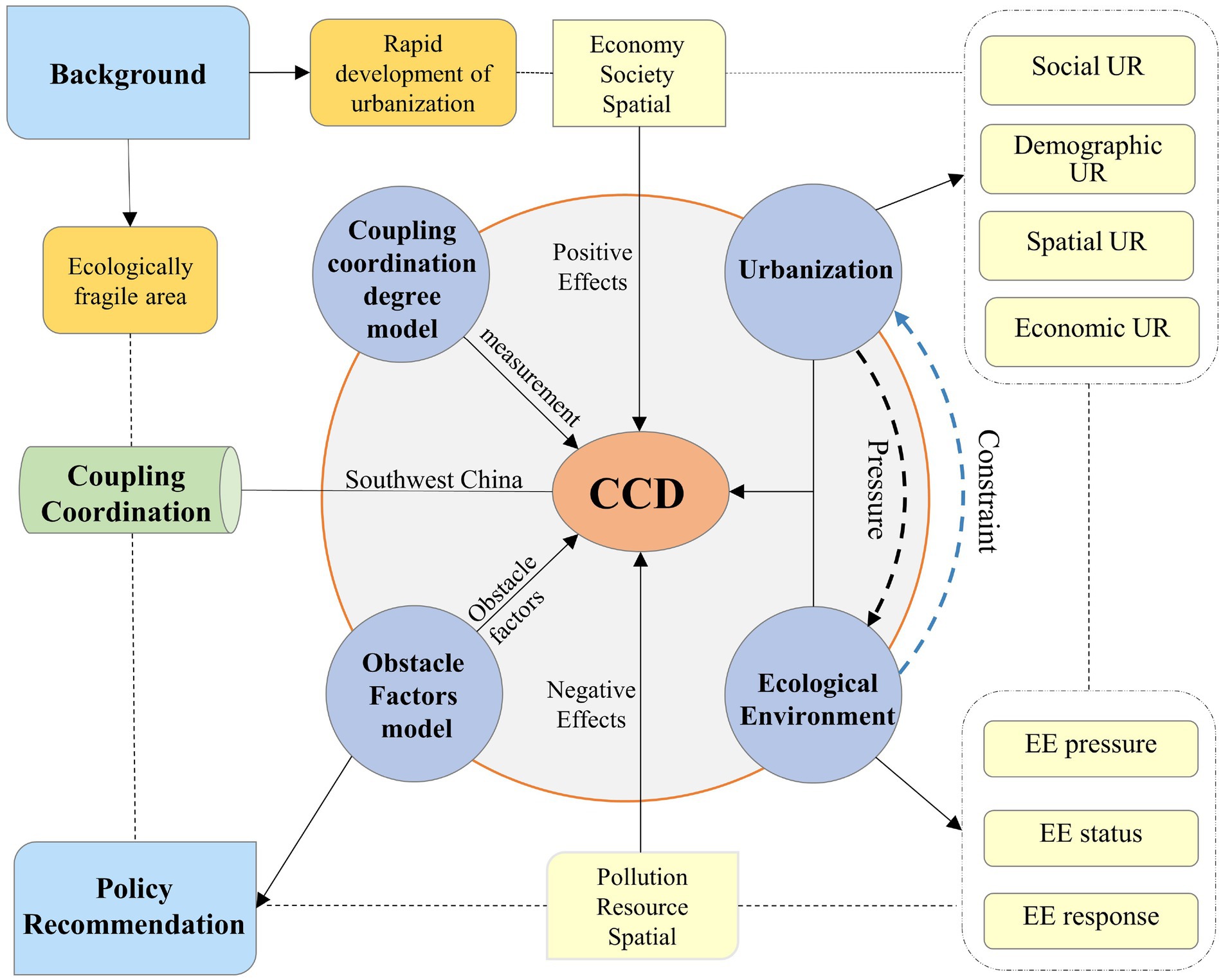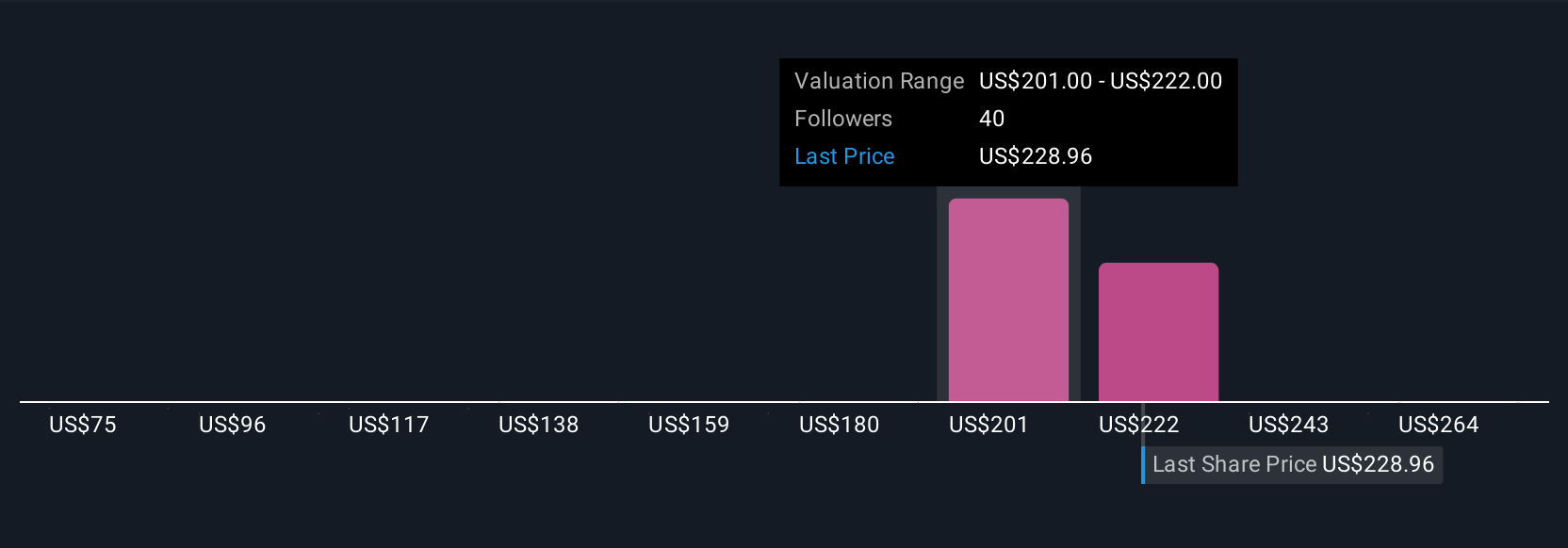Achieving sustainable development goals: coupling coordination between agricultural industrialization and rural infrastructure with the case of China – Nature

Report on the Coupling Coordination of Agricultural Industrialization and Rural Infrastructure for Achieving Sustainable Development Goals
Executive Summary
Coordinated interaction between Agricultural Industrialization (AI) and Rural Infrastructure (RI) is fundamental to achieving the Sustainable Development Goals (SDGs), particularly SDG-9, which promotes sustainable industrialization and resilient infrastructure. This report establishes and analyzes a coupling coordination mechanism to explain the dynamics between AI and RI. Using China as a case study, an evaluation system was developed to assess the development status (D) and coupling coordination status (CCS) of AI and RI, employing the Analytic Hierarchy Process, Information Entropy Method, and TOPSIS. The analysis reveals that AI and RI do not always develop concurrently, with 2018 marking a significant year of fluctuation for AI development. Spatially, high-performing AI regions are dispersed, while well-developed RI regions are geographically connected. The CCS exhibits spatial correlation and regional variation. Key findings indicate that “technologicalization” and “mechanization” are critical AI dimensions affecting RI, while RI’s influence on AI is becoming increasingly comprehensive. This study contributes to the theoretical understanding of AI-RI coordination and provides differentiated, practical countermeasures to enhance their synergy, thereby promoting the effective and efficient achievement of the SDGs.
1.0 Introduction: The Role of AI and RI in Achieving SDG-9
The United Nations’ 17 Sustainable Development Goals (SDGs) provide a global framework for a sustainable future. SDG-9, in particular, aims to build resilient infrastructure, promote inclusive and sustainable industrialization, and foster innovation. The development of rural areas is critical to this mission, as it directly impacts poverty reduction, economic growth, and environmental sustainability. This report focuses on two key drivers of rural development and their direct contributions to SDG-9:
- Agricultural Industrialization (AI): The modernization of agriculture through complete industrial and value chains enhances economic growth and resource efficiency. This process is a direct implementation of SDG-9’s call for sustainable industrialization, promoting cleaner agricultural practices and economic resilience in rural communities.
- Rural Infrastructure (RI): The development of resilient infrastructure in rural areas creates jobs, reduces poverty, and fosters coordinated urban-rural growth. This aligns directly with SDG-9’s objective to construct quality, reliable, and sustainable infrastructure to support economic development and human well-being.
While both AI and RI are recognized as essential for achieving SDG-9, their complex, intertwined relationship is not fully understood. Benign, coordinated interactions between them can accelerate progress, but uncoordinated development can create inefficiencies and hinder sustainability. Current research has not explicitly detailed this coupling coordination, creating a gap in knowledge that limits the effective implementation of SDG-9 strategies. This report aims to fill this gap by theoretically and empirically exploring the coupling coordination interactions between AI and RI to provide actionable insights for enhancing sustainability and achieving the SDGs.
2.0 Background Analysis: Interactions Between AI, RI, and the SDGs
Previous studies have demonstrated that AI and RI have complex, mutually influential relationships with both positive and negative effects. Understanding these dynamics is crucial for creating synergies that advance the SDGs.
2.1 Positive Synergies for SDG Attainment
- Impact of AI on RI:
- Agricultural industrialization promotes effective planning and utilization of rural infrastructure, supporting SDG-9’s goal of resilient infrastructure.
- Mechanization and technological innovation in AI improve resource efficiency, reduce pollution, and lessen the burden on environmental infrastructure, contributing to SDG-9.4 (upgrade infrastructure and retrofit industries to make them sustainable).
- Economic growth driven by AI provides financial resources for upgrading and building new rural infrastructure, directly supporting SDG-9.1.
- The adoption of digital technologies in AI accelerates the development of rural digital infrastructure, fostering innovation as called for in SDG-9.
- Impact of RI on AI:
- Robust production infrastructure (water, energy, internet) provides essential support for AI, enabling the mechanization and technological advancement required for sustainable industrialization (SDG-9).
- Improved living and social infrastructure (housing, education, healthcare) attracts and retains talent needed for a professionalized agricultural industry, enhancing human capital for innovation.
- Enhanced transportation infrastructure improves market connectivity and reduces costs, making agricultural industries more profitable and sustainable.
- Digital infrastructure enables smart agriculture and connects supply and demand, facilitating the industrial upgrading central to SDG-9.
2.2 Negative Effects and Obstacles to SDG Attainment
- Impact of AI on RI:
- AI can strain rural resources (water, land, energy) and increase pollution, creating a burden on existing infrastructure and potentially undermining the sustainability targets of SDG-9.
- Government budgets prioritizing AI subsidies may lead to underinvestment in essential rural infrastructure, creating an imbalance in SDG-9 progress.
- Labor surpluses from mechanization can lead to rural-urban migration, resulting in the inefficient use of rural infrastructure.
- Impact of RI on AI:
- Infrastructure projects can lead to “Not-In-My-Back-Yard” (NIMBY) effects, hindering the development of agriculture-related industrial facilities.
- Improved transportation can accelerate rural depopulation, leading to labor shortages for AI.
- Land use regulations associated with infrastructure development can restrict land availability for agricultural industrialization.
- Prioritizing land for infrastructure can raise construction costs for agricultural industrial projects, impeding progress toward sustainable industrialization.
3.0 Theoretical Framework and Methodology
3.1 A Coupling Coordination Mechanism for Achieving SDG-9
To analyze how AI and RI interact to achieve SDG-9, this report establishes a coupling coordination mechanism. This framework posits that positive, synergistic interactions between the two systems lead to sustainable and coordinated development. The mechanism is structured around key dimensions that directly reflect the targets of SDG-9.
- Agricultural Industrialization (AI) System: This system is evaluated based on five core dimensions that represent progress toward sustainable industrialization.
- Mechanization: Use of efficient machinery, enhancing productivity.
- Technicalization: Application of advanced technologies and scientific inputs.
- Professionalization: Growth of professional agricultural enterprises and talent.
- Intensification: Efficiency of input-output ratios for materials, capital, and resources.
- Sustainability: Direct measurement of AI’s alignment with SDG-9 targets, including job creation, economic contribution, and high-quality growth.
- Rural Infrastructure (RI) System: This system is evaluated based on four dimensions that represent progress toward resilient and inclusive infrastructure.
- Production: Infrastructure for production, including transport, water, and energy.
- Living: Infrastructure related to villagers’ quality of life, such as housing and utilities.
- Social Services: Public service infrastructure, including education and healthcare.
- Ecology: Environmental infrastructure and ecological protection measures.
The interaction between these dimensions fosters a virtuous cycle. For example, advancements in AI’s “technicalization” can improve RI’s “ecology” through cleaner technologies. Conversely, improvements in RI’s “social services” can support AI’s “professionalization” by attracting skilled labor. This mechanism provides a theoretical foundation for understanding how integrated development can effectively drive the achievement of SDG-9.
3.2 Evaluation System and Analytical Approach
An integrated evaluation system was constructed based on the theoretical mechanism, comprising 17 indicators for AI and 13 for RI. Indicators were selected based on their ability to reflect core connotations, global applicability, data accessibility, and a focus on “per capita” or “efficiency” metrics to align with the SDG principle of equitable and sustainable development. The analytical approach involved three main steps:
- Weight Determination: A combined Analytic Hierarchy Process-Information Entropy Weight (AHP-IEW) method was used to assign weights to each indicator, balancing expert judgment with objective data distribution.
- Status Calculation: The Technique for Order Preference by Similarity to an Ideal Solution (TOPSIS) was employed to calculate the development status (D) of AI and RI separately, as well as their overall Coupling Coordination Status (CCS).
- Factor Analysis: The Gray Correlation Degree (GCD) was used to identify the primary influencing factors driving the interaction between the AI and RI systems.
4.0 Report of Findings
4.1 Temporal Analysis: Divergent Paths to SDG Attainment
- Agricultural Industrialization (AI-D): The development of AI has been volatile, with 2018 emerging as a watershed year of significant fluctuations across most regions. This instability suggests a precarious path toward achieving the stable, sustainable industrialization targeted by SDG-9. For example, while Guangdong’s AI-D surged due to advancements in mechanization and technicalization (aligning with SDG-9.5), Xinjiang’s declined due to a drop in mechanization, highlighting regional vulnerabilities.
- Rural Infrastructure (RI-D): In contrast, RI development has shown a mild but steady upward trend across regions, with development gaps gradually narrowing. This reflects the positive impact of continuous and cumulative investment in infrastructure, contributing consistently to SDG-9.1 (develop sustainable and resilient infrastructure).
- Development Imbalance: AI and RI have not developed concurrently. Before 2017, their development was largely synchronized. However, since 2018, RI development has generally outpaced AI development in many regions, indicating an imbalance in progress toward the integrated goals of SDG-9.
4.2 Spatial Analysis: Regional Disparities in SDG-9 Progress
- Distinct Spatial Patterns: High-performing AI regions are geographically dispersed (“dotted”), reflecting localized strengths in technology, policy, or resources. In contrast, regions with well-developed RI are geographically clustered (“connected”), often surrounding less-developed areas. Coastal regions tend to perform better in both AI and RI due to economic and geographical advantages.
- Regional Challenges: The analysis reveals that some regions, traditionally considered agricultural powerhouses like Henan, perform weakly in both AI-D and RI-D when measured by “per capita” and “efficiency” metrics. This finding challenges conventional wisdom and underscores that large-scale output does not equate to the high-quality, sustainable development required by the SDGs. This highlights significant regional disparities in achieving inclusive industrialization and infrastructure development.
4.3 Coupling Coordination Status (CCS): Measuring Integrated SDG-9 Progress
- Temporal Fluctuations: The overall CCS also experienced a watershed moment in 2018, largely due to the exceptional performance of Guangdong, which raised the benchmark for coordinated development. Since 2019, other regions have begun to close this gap, indicating a collective effort toward achieving a more benign coordination between industrialization and infrastructure.
- Spatial Correlation: CCS values are spatially correlated, with clusters of low-performing regions in central, southwestern, and northeastern China. Coastal regions like Shanghai and Hainan demonstrate better coordination. Lagging regions face unique challenges; for instance, Guizhou is hindered by difficult terrain, while Anhui suffers from population loss and insufficient investment channels. This indicates that pathways to achieving the integrated vision of SDG-9 are highly context-dependent.
4.4 Key Influencing Factors for SDG-9 Synergy
- AI’s Influence on RI: The “technologicalization” (M2) and “mechanization” (M1) dimensions of AI are the most critical drivers of RI development. Over time, the influence of “professionalization” (M3) has grown significantly, indicating that human capital and corporate expertise in AI are becoming increasingly important for stimulating RI improvements.
- RI’s Influence on AI: The “living” (N2), “social service” (N3), and “ecology” (N4) dimensions of RI have the most significant impact on AI. This finding underscores that high-quality living conditions and public services are prerequisites for attracting the talent and investment needed for sustainable agricultural industrialization. The influence of all RI dimensions on AI has strengthened over time, showing that RI is becoming a comprehensive and foundational enabler for AI.
5.0 Conclusions and Recommendations for SDG Attainment
5.1 Summary of Key Findings
- The development paths of AI and RI are often asynchronous, with AI exhibiting greater volatility and RI showing steadier growth. This imbalance poses a challenge to the integrated achievement of SDG-9.
- Significant spatial disparities exist in both development status and coordination. Progress toward SDG-9 is not uniform, with coastal regions generally outperforming inland regions.
- The coupling coordination between AI and RI is strengthening over time, with their mutual influence becoming more comprehensive. This confirms that an integrated approach is essential for realizing SDG-9.
- Technological advancement and mechanization in AI, alongside quality of life and social services in RI, are the most critical levers for creating a virtuous cycle of sustainable development.
5.2 Differentiated Policy Recommendations for Accelerating SDG-9
Based on the findings, differentiated strategies are required for regions with varying levels of coordination to accelerate progress toward SDG-9.
- For Regions with RI Lagging Behind AI: The focus should be on developing sustainable infrastructure tailored to local environmental and agricultural needs. This includes investing in water-saving or cold-resistant technologies, improving social services to retain talent, and ensuring infrastructure can support advanced agricultural practices.
- For Regions with AI Lagging Behind RI: The priority is to develop niche and differentiated agricultural industries that leverage existing infrastructure. This involves constructing specialized AI facilities, promoting intelligent agricultural technologies (e.g., drones), and seeking professional guidance to enhance the competitiveness of local agricultural products.
- For Regions with High CCS: These regions should aim to become leaders in achieving SDG-9 by optimizing their industrial structures and integrating advanced technologies like IoT and big data. Fostering cooperation among stakeholders (universities, companies, investors) and attracting social capital will be key to reaching the next level of sustainable development.
- For Regions with Weak CCS: These regions must allocate limited resources efficiently. This includes developing labor-intensive agricultural industries assisted by machinery, providing professional skills training to villagers to improve human capital, and constructing integrated, multifunctional facilities that serve both production and community needs.
5.3 Contributions to SDG Theory and Practice
This report makes several key contributions to the global effort to achieve the SDGs.
- Theoretical Contribution: It establishes a novel coupling coordination mechanism that explicitly links the interaction between AI and RI to the achievement of SDG-9, enriching both coordination theory and the conceptual understanding of the SDGs.
- Methodological Contribution: It introduces an evaluation framework that prioritizes “per capita” and “efficiency” indicators, offering a more accurate measure of sustainable and inclusive development that aligns with the core principles of the SDGs.
- Practical Contribution: It provides differentiated, evidence-based countermeasures for regions at different stages of development. These actionable recommendations can guide policymakers globally in fostering the synergy between industrialization and infrastructure needed to achieve SDG-9 and promote overall rural sustainability.
Analysis of Sustainable Development Goals in the Article
1. Which SDGs are addressed or connected to the issues highlighted in the article?
The article primarily focuses on one Sustainable Development Goal (SDG), but also connects the central issues of agricultural industrialization and rural infrastructure to several other SDGs. The analysis identifies the following:
- SDG 9: Industry, Innovation and Infrastructure: This is the central SDG addressed throughout the article. The introduction explicitly states, “…the UN proposed 17 sustainable development goals (SDG), and one goal (namely SDG-9) is to encourage sustainable industrialization with innovation and construct more resilient infrastructure.” The entire study is framed around how the interaction between agricultural industrialization (AI) and rural infrastructure (RI) is a “specific practice of SDG-9 in agriculture and rural areas.”
- SDG 1: No Poverty: The article connects rural development and infrastructure to poverty reduction. The introduction mentions that “rural development reduces poverty” and that rural infrastructure “enhanc[es] villagers’ well-being and reducing poverty.”
- SDG 3: Good Health and Well-being: The text links rural development to health, stating in the introduction that it “promotes health” and that rural infrastructure enhances “villagers’ well-being.”
- SDG 4: Quality Education: The promotion of education is cited as a benefit of rural development in the introduction. Furthermore, the evaluation system for rural infrastructure includes “basic education quality” as a key indicator.
- SDG 8: Decent Work and Economic Growth: The article implies a strong connection to this goal by discussing how agricultural industrialization “promotes rural economic growth” and creates jobs. The evaluation framework for AI includes “importance to employment” as an indicator of sustainability.
- SDG 11: Sustainable Cities and Communities: The goal of creating sustainable communities is addressed through the discussion of rural development. The article notes that sustainable agricultural infrastructure “fosters coordinated urban-rural development.”
- SDG 12: Responsible Consumption and Production: This is implied when the article discusses the benefits of agricultural industrialization, such as optimizing “production processes and upgrades processing equipment, which improves resource efficiency and leads to cleaner, more sustainable agricultural practices.”
2. What specific targets under those SDGs can be identified based on the article’s content?
The article explicitly and implicitly refers to several targets, primarily under SDG 9.
- Target 9.1: Develop quality, reliable, sustainable and resilient infrastructure: This target is central to the article’s focus on Rural Infrastructure (RI). The text defines RI as the “construction of rural infrastructure (such as roads, electricity, and water supply) to guarantee villagers’ lives and production activities.” The entire discussion on improving RI directly supports this target.
- Target 9.2: Promote inclusive and sustainable industrialization: This target is directly addressed through the concept of Agricultural Industrialization (AI). The article describes AI as a process that “creates complete industrial and value chains… increases the added value of products, promotes rural economic growth, and contributes to SDG-9.”
- Target 9.4: Upgrade infrastructure and retrofit industries to make them sustainable: The article connects both AI and RI to this target. It mentions that AI improves “resource efficiency and leads to cleaner, more sustainable agricultural practices.” The analytical framework includes “sustainability” as a core dimension of AI and “ecology” (including sewage and waste treatment) as a core dimension of RI, both of which align with upgrading for sustainability. The article explicitly states that its framework’s dimensions “reflect the targets of SDG-9 (9.1–9.4).”
- Target 9.5: Enhance scientific research, upgrade the technological capabilities of industrial sectors: This is reflected in the “technicalization” dimension of the AI evaluation system, which includes “technical research investment” as a key indicator. The article notes that AI “fosters technological innovation, prompting villagers to adopt new technologies and enhance their skills.”
- Target 9.a: Facilitate sustainable and resilient infrastructure development in developing countries: The entire study, which uses China as its case, is an analysis of infrastructure and industrialization within a developing country context, making this target highly relevant. The discussion on financing and investment in AI and RI supports this.
- Target 9.b: Support domestic technology development, research and innovation: The emphasis on “technologicalization” and “innovation” within the agricultural industrialization process aligns with this target, particularly in the context of a national case study like China.
3. Are there any indicators mentioned or implied in the article that can be used to measure progress towards the identified targets?
The article does not refer to the official UN SDG indicators. However, it proposes a comprehensive evaluation system with its own set of indicators to measure the development status of Agricultural Industrialization (AI) and Rural Infrastructure (RI). These can be considered proxy indicators for measuring progress towards the identified SDG 9 targets.
Proxy Indicators for Agricultural Industrialization (related to Targets 9.2, 9.4, 9.5)
- Mechanization: Machinery power efficiency, mechanical input scope, mechanical input efficiency, and mechanical output efficiency.
- Technicalization: Technical research investment, fertilizer use coverage, pesticide use coverage, and plastic film use coverage.
- Professionalization: Human resource input, input scope, and labor productivity of professional agricultural companies.
- Intensification: Agricultural production efficiency, capital investment efficiency, and production factor investment efficiency.
- Sustainability: Financing ratio, importance to employment, and importance to output value.
Proxy Indicators for Rural Infrastructure (related to Targets 9.1, 9.4, 9.a)
- Production: Reservoir use efficiency, power generation efficiency, and road use efficiency.
- Living: Household water supply quality, household gas supply quality, and household clean energy supply efficiency.
- Social Service: Public facilities investment coverage, basic education quality, medical service coverage, and minimum social security service coverage.
- Ecological: Domestic sewage treatment coverage, domestic waste disposal coverage, and green investment coverage.
4. Table of SDGs, Targets, and Indicators
| SDGs, Targets and Indicators | Targets | Indicators (as proposed in the article) |
|---|---|---|
| SDG 9: Industry, Innovation and Infrastructure | 9.1: Develop quality, reliable, sustainable and resilient infrastructure. |
|
| 9.2: Promote inclusive and sustainable industrialization. |
|
|
| 9.4: Upgrade infrastructure and industries for sustainability. |
|
|
| 9.5: Enhance scientific research and upgrade technology. |
|
|
| 9.a: Facilitate sustainable infrastructure development in developing countries. |
|
|
| 9.b: Support domestic technology development and innovation. |
|
Source: nature.com

What is Your Reaction?
 Like
0
Like
0
 Dislike
0
Dislike
0
 Love
0
Love
0
 Funny
0
Funny
0
 Angry
0
Angry
0
 Sad
0
Sad
0
 Wow
0
Wow
0












































































